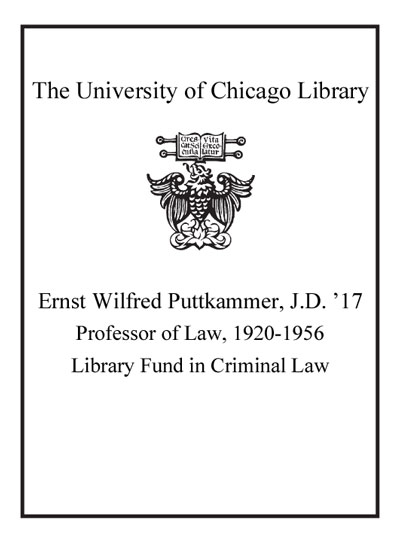Review by Booklist Review
What will happen to the FBI, a group that can be described as good, bad, or ugly on any given day, is anyone's guess. Two recent publication stress the ugly and the good. Following the disastrous affair at the Branch Davidian compound at Waco, Texas, plus the botched arrest of Randy Weaver at his farm in Ruby Ridge, Idaho, the FBI has never been more scrutinized and castigated. Count on this book by investigative reporters Kelly and Wearne to make the situation worse. The authors offer strong documentation that employees at FBI crime labs are guilty of all manner of incompetent behavior and outright falsification of evidence. A key informant is Dr. Frederick Whitehurst, for 10 years a chemist at one such lab. Whitehurst claims that a superior asked him to "fix" a report so that it would match evidence from a related trial. Using Whitehurst's experiences as the starting point, the authors uncover numerous examples of botched lab procedures and protocols, falsified data, and a widespread bias toward the prosecution. Former Newsday correspondent Volkman chronicles the rise and fall of New York's Lucchese crime family. The family got its start during the 1920s Prohibition era through Gaetano Lucchese, a streetwise tough from East Harlem who teamed up with another rising star in crime, Meyer Lansky. Starting with illegal booze, the two soon moved into protection rackets, prostitution, and, later, drugs. By the mid-1980s, the Luccheses ran much of New York's garment district, controlled a fleet of garbage trucks, and stole extensively from JFK Airport's air freight terminal, all to the tune of $300 million per year. Enter the FBI and Justice Department, intent on taking down the Luccheses, America's top crime family. Doing so, Volkman argues, signaled the overall demise of organized crime. Like a crime novelist, Volkman follows everyone, from special agents and prosecutors to hoods, big shots, and the Lucchese boss who turned government witness. --Brian McCombie
From Booklist, Copyright (c) American Library Association. Used with permission.
Review by Publisher's Weekly Review
The media has familiarized the public with the vocabulary of forensic science: DNA identification, fingerprinting, bomb signatures, etc. However, as journalists Kelly and Wearne make clear in this exposé of the FBI crime lab, some of these practices are dubious at best, and any of them is only as effective as the scientist behind it. The book was prompted by the complaints lodged against the bureau by FBI crime-lab scientist Fred Whitehurst, and the congressional inquiries that arose from his whistle-blowing. The problem Whitehurst identified is twofold. First, the bureau allegedly puts so much faith in its reputation that it refuses to submit to external certification even as it fails to maintain state-of-the-art labs. Second, the FBI lab is said to operate as a good-ol'-boy network, promoting unqualified agents and often taking direction from field investigators. Kelly and Wearne detail how the FBI crime lab's alleged arrogance and incompetence has, they say, affected the investigation of six high-profile cases, with apparent offenses ranging from laziness and bungling in the Unabomber, O.J. Simpson and Oklahoma City cases to possible perjury in the World Trade Center bombing case and conspiracy to withhold evidence in the investigation of the FBI assault on Ruby Ridge and a series of bomb attacks on federal judges in the late 1980s. Their book is painstakingly researched and highly detailed, but the abundance of informationsome of it shockingdoesn't excuse its bone-dry, tedious presentation. In any case, this volume belongs on the reading list of any criminal defense attorney as a road map to the successful cross-examination of forensics experts. (July) (c) Copyright PWxyz, LLC. All rights reserved
(c) Copyright PWxyz, LLC. All rights reserved
Review by Library Journal Review
The reputation of the FBI has suffered in recent years, and this book will do nothing to rehabilitate it. Based primarily on the accusations of whistleblower Frederic Whitehurst (a former FBI chemist) and a 1997 report on the FBI laboratory by the Justice Department's inspector general, it is a scathing criticism, alleging sloppy, inaccurate forensics, pro-prosecution bias, and false testimony. Journalists Kelly and Wearne focus on such high-profile cases as O.J. Simpson, the Unabomber, the Ruby Ridge shootout, and the World Trade Center and Oklahoma City bombings while portraying an agency more concerned with image and power than with accurate forensic science. As a result, they suggest that thousands of old verdicts should be revisited. Admirers of the FBI crime lab, such as David Fisher in Hard Evidence (LJ 3/1/95), may disagree with the conclusions here, but it is compelling reading for anyone interested in criminal justice or forensics. Highly recommended.ÄGregor A. Preston, formerly with Univ. of California Lib., Davis (c) Copyright 2010. Library Journals LLC, a wholly owned subsidiary of Media Source, Inc. No redistribution permitted.
(c) Copyright Library Journals LLC, a wholly owned subsidiary of Media Source, Inc. No redistribution permitted.
Review by Booklist Review
Review by Publisher's Weekly Review
Review by Library Journal Review

